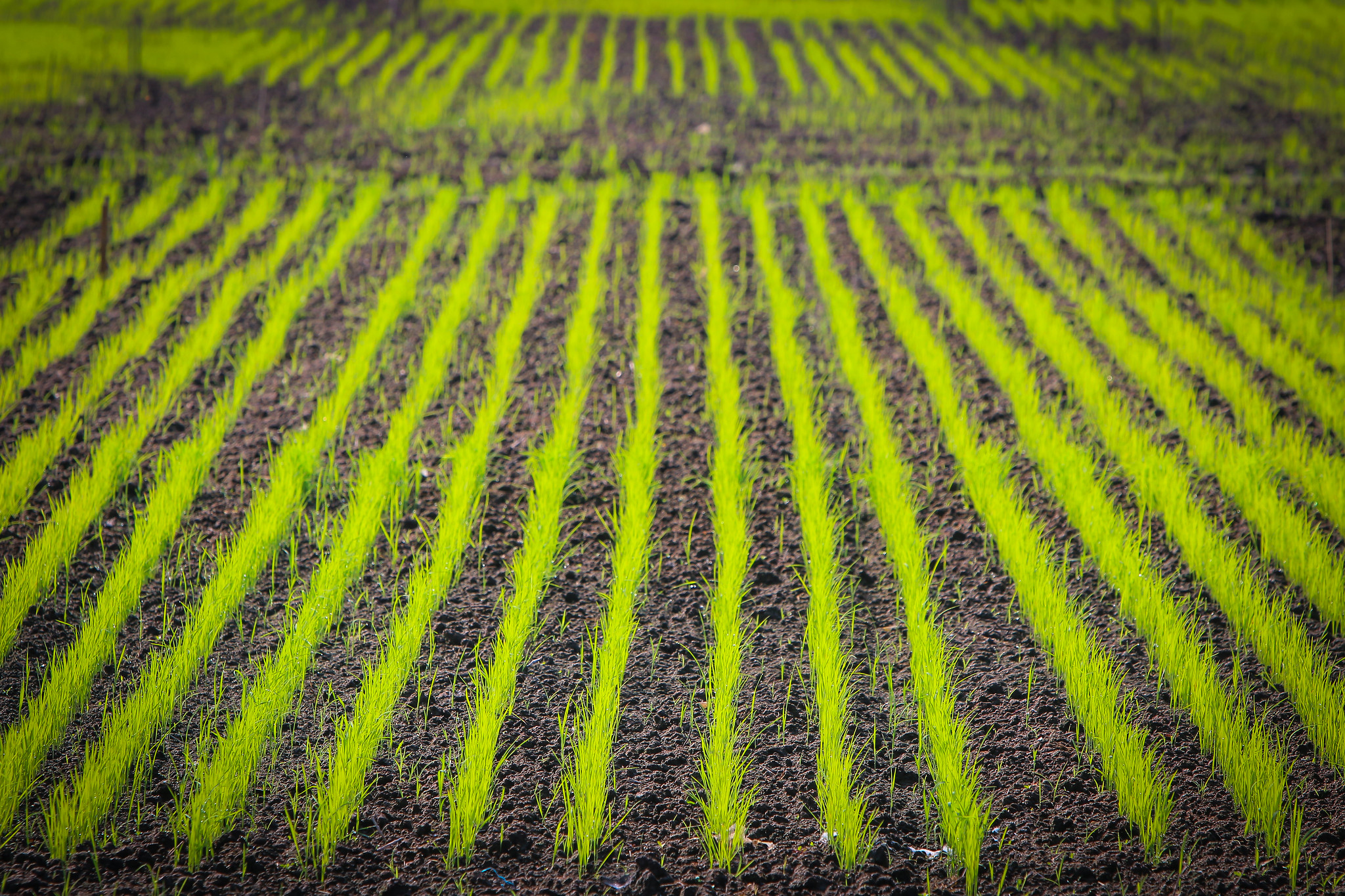Direct seeded rice: what are the benefits, potential and suitability in Haryana, India?
-
From
CGIAR Initiative on NEXUS Gains
-
Published on
07.02.23
- Impact Area

By Proloy Deb, Virender Kumar and Amit Srivastava
Rice is one of the most widely grown cereal crops in India, providing primary nutrition as well as key livelihood and economic value – $23.3 billion in 2020. It is a water-intensive crop, however, and requires 1,000–2,000 millimeters of irrigation per cropping cycle, contributing to almost 40% of freshwater withdrawals in India. Most irrigation water is abstracted from groundwater, which relies on pumping that has led to a significant decline in the groundwater table in many places. Shifts in cultivation practices and management may foster greater sustainability.
One potentially advantageous approach for cultivating rice is the direct seeded rice (DSR) system, which is different from the traditional transplanted rice (TPR) system of cultivation. In DSR, the rice seed is planted in the soil, either with or without irrigation before seeding. This can be a more water-efficient approach: water diversion to the paddy field is significantly reduced before seeding, and it does not require ponding. Generally, under the DSR system, a minimum water saving of 18% can be achieved relative to TPR without compromising yield. Further water savings can be achieved with better management practices, including delaying the first irrigation and not flooding. There are nonetheless disadvantages to DSR. For example, rice grown under the DSR system is susceptible to higher weed infestation than under the TPR system. In addition, farmers may need to consider how their cropping system can include complementary crops to DSR, which are often different from crops that complement TPR.

DSR is not suitable everywhere. Biophysical characteristics of croplands drive the system’s suitability at any given location. In a recent study supported by the CGIAR Initiative on NEXUS Gains, potential DSR areas were mapped using geospatial modeling in three districts (Karnal, Panipat and Yamuna Nagar) in Haryana state, India. This activity is one of the three major objectives of an activity falling under Work Package 2 (boosting water productivity and integrated storage management at basin scale).
For this activity, input layers for the suitability analysis were derived from various biophysical characteristics of mapped croplands, including soil information (texture, type, depth, slope and drainage), land use information, climatic variables (precipitation, minimum and maximum temperature, evapotranspiration and humidity), land types (upland, mid and lowland), crop phenology (crop duration, start and end of cropping season), irrigated areas, groundwater potential zones and soil moisture availability. Based on a set of desired characteristics established from field trials, scores were allotted for each characteristic and locations were ranked based on their total scores. The suitability classes were determined based on the degree of suitability for specific cropland in four classes: suitable, moderately suitable, marginally suitable and not suitable.
The results illustrate that approximately 60% of the farms in Karnal, 45% of the farms in Panipat and 20% of the farms in Yamuna Nagar are suitable for DSR. While there is a significant potential boost in employing DSR technology in the state of Haryana, with water savings of at least 740,000 cubic meters among the three districts as well as labor savings, the system is not recommended for all farms. This is because of negative factors including low water holding capacity of the soil and poor yield resulting from higher weeds.
A thorough plot-scale study must, therefore, be carried out before adopting DSR. Additionally, farmers in the state need to be trained by other experienced farmers and scientists on how to adopt this system for groundwater sustainability. Furthermore, as per the findings of the study, the government should incentivize farmers or further subsidize agricultural inputs in Karnal and Panipat districts for adoption of DSR. Moreover, since DSR improves water productivity, similar studies are essential elsewhere in the Ganges River Basin where the groundwater resources are under severe stress.

Proloy Deb is a Postdoctoral Fellow – Water Management at the International Rice Research Institute (IRRI); Virender Kumar is a Senior Scientist, Weed Science/Systems Agronomy and is the Deputy Platform Leader of the Sustainable Impact Platform and Research Leader of Climate-Resilient Farming Systems at IRRI; and Amit Srivastava is a Geospatial Scientist at IRRI.
This work was carried out under the CGIAR Initiative on NEXUS Gains, which is grateful for the support of CGIAR Trust Fund contributors: www.cgiar.org/funders
Header image: Direct seeded rice. Photo by IRRI.
Related news
-

Harnessing digital tools in securing soil health for Africa’s food future
Sehlule Muzata27.06.25-
Climate adaptation & mitigation
-
Environmental health
-
Nutrition, health & food security
-
Poverty reduction, livelihoods & jobs
Nairobi, 27 June 2025 (IITA) - As it marks its first anniversary, the Regional Hub…
Read more -
-

Harnessing digital tools in securing soil health for Africa’s food future
Sustainable Farming Science Program27.06.25-
Climate adaptation & mitigation
-
Environmental health
-
Food security
-
Poverty reduction, livelihoods & jobs
Nairobi, 27 June 2025 (IITA) - As it marks its first anniversary, the Regional Hub…
Read more -
-

Raising productivity and profits, How AgWise is Closing Yield Gaps through AI
Sehlule Muzata20.06.25-
Adaptation
-
Climate adaptation & mitigation
-
Environmental health
-
Food security
-
Poverty reduction, livelihoods & jobs
Nairobi, 20 June 2025 (IITA) - Across Africa smallholder farmers battle working with degraded soils,…
Read more -
